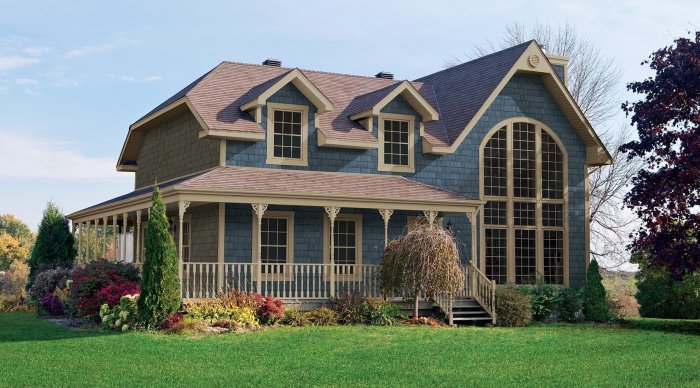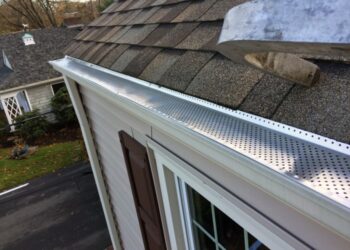Delving into the realm of house siding installation near me, this opening paragraph aims to captivate and engage readers with valuable insights and information.
The following paragraph will provide a comprehensive overview of the topic, covering various aspects of local siding installation services and materials used.
Finding Local House Siding Installation Services

When it comes to house siding installation, hiring local contractors can offer numerous benefits. Not only are local companies more familiar with the specific needs of your area, but they also provide a level of personalized service that national companies may lack.
Researching Local Siding Installation Companies
When searching for reputable siding installation companies near your location, consider starting with online reviews and recommendations from friends or family. Local business directories and websites like Yelp or Angie’s List can also be valuable resources to find trusted contractors in your area.
Benefits of Choosing Local Services
- Quick Response Time: Local contractors can often respond to inquiries and requests for service more promptly than national companies, ensuring your project stays on track.
- Knowledge of Local Building Codes: Local contractors are well-versed in the building codes and regulations specific to your area, helping to ensure that your siding installation is done correctly and meets all requirements.
- Personalized Customer Service: With local companies, you can expect a more personalized and attentive level of customer service, as they are invested in maintaining a positive reputation within the community.
- Supporting the Local Economy: By choosing a local contractor for your siding installation needs, you are supporting small businesses and contributing to the growth and vitality of your community.
Types of House Siding Materials

When it comes to house siding installations, there are several common materials used, each with its own set of benefits and considerations. Understanding the different types of house siding materials can help you make an informed decision for your home.
Vinyl Siding
- Vinyl siding is a popular choice due to its affordability and low maintenance requirements.
- It is durable and resistant to rot, moisture, and insects.
- Comes in a variety of colors and styles to suit different architectural designs.
Wood Siding
- Wood siding offers a classic and natural look, enhancing the aesthetic appeal of a home.
- It requires more maintenance compared to vinyl, including regular painting or staining to protect against rot and pests.
- Can be more expensive upfront but adds value and charm to a property.
Fiber Cement Siding
- Fiber cement siding is a versatile option that combines the look of wood with the durability of cement.
- It is resistant to fire, insects, and rot, making it a long-lasting choice for homeowners.
- Available in a range of textures and colors to mimic the appearance of wood, brick, or stucco.
Brick Siding
- Brick siding offers a timeless and elegant look to a home, with excellent durability and low maintenance requirements.
- It provides natural insulation and is resistant to fire, moisture, and pests.
- While more expensive than other materials, brick siding can increase the resale value of a property.
Cost Factors and Estimates
When it comes to house siding installation, the cost can vary depending on several factors. Understanding these cost factors and how to get accurate estimates is crucial for budgeting effectively for your project.
Factors Influencing House Siding Installation Prices
- The size of your home: Larger homes will require more materials and labor, leading to higher costs.
- The type of siding material: Different types of siding materials come at varying price points, with some being more expensive than others.
- The condition of your current siding: If there is damage or underlying issues that need to be addressed before installation, this can add to the overall cost.
- Location and accessibility: Factors such as the location of your home, ease of access, and local labor costs can impact the final price.
Tips for Getting Accurate Estimates
- Get multiple quotes: Reach out to several local siding contractors to compare prices and services offered.
- Provide detailed information: Be sure to provide accurate information about your home and any specific requirements you may have.
- Avoid lowball estimates: While it may be tempting to go with the lowest bid, be wary of extremely low estimates as they may indicate subpar quality or hidden costs.
Effective Budgeting for a House Siding Project
- Set a realistic budget: Determine how much you are willing to spend on your siding project and stick to it.
- Plan for unexpected costs: Leave room in your budget for any unforeseen expenses that may arise during the installation process.
- Consider long-term savings: While upfront costs are important, also think about the long-term savings and benefits of investing in high-quality siding materials.
Steps in House Siding Installation
Proper installation of house siding is crucial for both aesthetics and functionality. Understanding the typical steps involved in the process can help ensure a successful outcome.
Preparation and Planning
Before the actual installation begins, professionals will assess the current condition of the existing siding and make necessary repairs. They will also take accurate measurements of the house to determine the amount of siding needed. Proper preparation ensures a smooth installation process and helps prevent any issues down the line.
Siding Material Selection
Once the preparation is complete, homeowners can choose the type of siding material they prefer. Professionals can provide guidance on the best options based on durability, maintenance requirements, and budget. Selecting the right material is essential for the longevity and appearance of the house.
Installation Process
The installation process typically involves removing the old siding, applying a weather-resistant barrier, and then installing the new siding. Professionals will ensure that each piece of siding is properly aligned, secured, and sealed to protect the house from the elements.
Attention to detail during this stage is crucial for a flawless finish.
Finishing Touches
Once the siding is installed, professionals will inspect the work to ensure everything is in place and meets quality standards. They may also add finishing touches like trim pieces or paint to enhance the overall look of the house. Attention to detail in the final steps is key to achieving a polished appearance.
Maintenance and Care
After the installation is complete, professionals may provide guidance on how to properly maintain and care for the new siding. Regular inspections and cleaning can help extend the lifespan of the siding and keep the house looking its best for years to come.
Final Wrap-Up

Concluding our discussion on house siding installation near me, we have explored key factors and considerations to keep in mind when embarking on a siding project.
FAQ Resource
What are the benefits of hiring local contractors for house siding installation?
Local contractors offer quicker response times, better knowledge of local regulations, and often provide more personalized service compared to national companies.
How can I get accurate estimates from local siding contractors?
Request quotes from multiple contractors, provide detailed information about your project, and ask for a breakdown of costs to ensure transparency.
What are the common types of materials used for house siding installation?
Common materials include vinyl, wood, fiber cement, and aluminum, each with its own unique characteristics in terms of durability and maintenance.
Why is proper preparation important before installing new siding?
Proper preparation ensures that the siding is installed correctly and can help prevent issues such as moisture damage or poor insulation.
How can I budget effectively for a house siding project?
Research the average costs of siding materials and labor in your area, set aside a contingency fund for unexpected expenses, and prioritize the essentials of your project within your budget.






